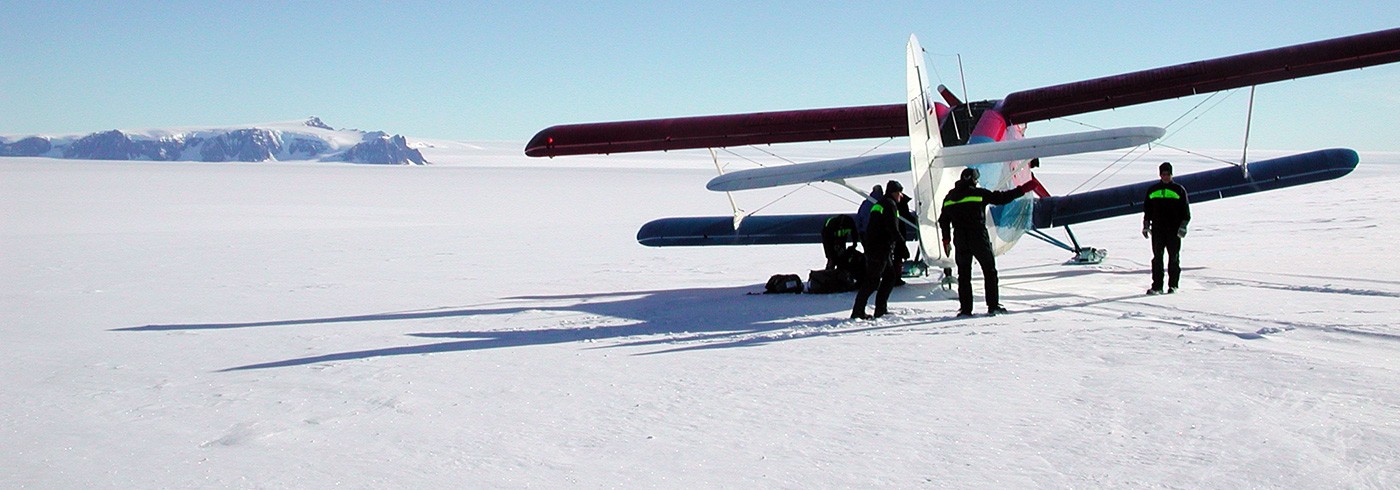Automatic Weather Stations in Dronning Maud Land, activities during the field season 2003/04
1 November 2003 - 29 February 2004
Left: Wind speed and temperatures at Wasa as measured in between visits. Right: Wind speed and temperatures at Svea as measured in between visits.
Aim of the work
Since 1997/98, IMAU (the Institute for Marine and Atmospheric Research at Utrecht University) has been operating Automatic Weather Stations (AWS) in western Dronning Maud Land, of which one is close to Wasa (AWS 5) and one is near Svea (AWS 6). The data from these stations have proved highly valuable for Antarctic climate studies, as demonstrated by papers that have been accepted in 2004 (see list of references) as well as the wide range of applications for which AWS data have been used. In principle funding for the operation of the AWS is secured until 2012 (inclusive). There are advanced plans for a detailed meteorological experiment at the site of AWS 5 in 2006/07, in close collaboration with SWEDARP and Stockholm University. As part of that experiment, the AWS will be equipped with sensors for year-round eddy-correlation measurements and possibly a snowdrift detection system.
Field work in 2003/04
In the field season 2003/04, AWS 5 near Wasa and AWS 6 near Svea were visited by personnel from the Swedish Polar Research Secretariat and the University of Helsinki respectively. Memory modules were exchanged and data successfully retrieved. In the next season 2004/05, the AWS will be equipped with a new mast system for easier extension. For this an IMAU technician will spend the field season in Wasa and Svea.
Some results
Figure 1 show wind speed and temperatures as measured at AWS 5 and 6 as measured in between visits. Several stormy periods can be identified at both AWSs, with wind speeds at AWS 5, being closer to the weather systems, typically several meters per second stronger than at AWS 6. During both summer and winter, windy episodes are accompanied by high temperatures and vice versa. It is quite remarkable that the temperature difference between the two AWS is so small in spite of the elevation difference (table 1). This is because the katabatic wind system is somewhat better developed at AWS 6 than at AWS 5, resulting in continuous mixing of the near surface air, which prevents the formation of a strong temperature inversion. This is supported by the fact that calms occur more frequently at AWS 5 than at AWS 6. Note that in the summer of 2003/04 temperatures rose above 0°C several times at AWS 6. This is remarkable for a site at this elevation. ARGOS data have confirmed that extensive melting also took place at AWS 5 during this period.
Data availability
Under certain conditions, the AWS data are available free of charge. Those interested to work with the data should contact Michiel Van den Broeke or Carleen Reijmer.
Acknowledgments
We thank all those involved in the 2003/04 maintenance of AWS 5 and 6.


